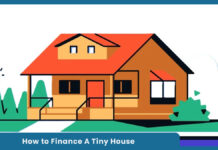Due to the increasing challenges posed by inflation, many older citizens face difficulties sustaining themselves. To navigate this, some are turning to a unique financial option known as a reverse mortgage, leveraging the equity they’ve built up in their homes.

A reverse mortgage is tailored for individuals aged 65 and above, making it an advantageous tool for older people. Homeowners often use this option to reduce their monthly housing expenses or to enhance their financial situation in retirement.
Essentially, a reverse mortgage is a type of home loan that allows older homeowners to borrow against the equity in their homes. The distinctive feature is that these homeowners are not required to make monthly mortgage payments.
Instead, they receive funds from the lender either through a line of credit, monthly installments, or a lump sum at the closing. This provides older citizens with flexible financial resources to address their needs and improve their quality of life during retirement.
What Is A Reverse Mortgage?
A reverse mortgage is a type of loan that enables homeowners from the age of 65 and above, especially those who have paid their mortgage, to borrow money against part of their home equity.
Unlike a common mortgage, where the homeowner makes monthly payments to the lender, in a reverse mortgage, the lender will make constant payments to the homeowner. The money is also tax-free.
How Does Reverse Mortgage Work?
A reverse mortgage provides payments to homeowners, offering flexibility in how they receive the funds. Homeowners can choose the payment method, and the mortgage covers only the interest on the total proceeds received.
The accrued interest is added to the loan balance, eliminating the need for homeowners to make upfront payments. Importantly, homeowners retain ownership of the home throughout the loan period.
As the reverse mortgage progresses, home equity decreases, and the homeowner’s debt increases. The house serves as collateral for the reverse mortgage. Upon the homeowner’s death or relocation, the proceeds from the sale cover the reverse mortgage interest, fees, principal, and mortgage insurance.
Any surplus from the sale, exceeding the initially borrowed amount, goes to the living homeowner or, in the case of the homeowner’s demise, to their estate. This ensures that homeowners and their heirs receive the maximum benefit from the home’s value.
Types Of Reverse Mortgages
There are several types of reverse mortgages, and every one of them suits different financial needs. Here are the types of reverse mortgages:
Single-Purpose
This mortgage is not very common, and it is mostly offered by state and local government agencies and non-profit organizations. A single-purpose mortgage is usually the least expensive of the three options.
However, the borrower can only make use of the loan to cover one purpose, like a non-profit debt counselor that is based in Sugar Land, Texas, disability-accessible remodeling, and others.
Home Equity Conversion Mortgage (HECM)
This is a federally insured mortgage that has a higher upfront cost, and the funds can be used for various purposes. It is the most well-known type of reverse mortgage, and you can also select how the funds are withdrawn, such as through a line of credit or fixed monthly payments.
While this type of mortgage is widely available, the Home Equity Conversion Mortgage is only provided by the Federal Housing Administration. Furthermore, before closing, all the borrowers should receive HUD-approved counseling.
Proprietary
This type of mortgage is a private loan that is not backed by the government. The borrowers can receive a larger loan advance, especially if your home has a higher value. This type is available via private reverse mortgage lenders.
The lenders will set their home terms, and this can differ from HUD loan terms. There is no need to have counseling to be able to qualify for this type of loan because it is not backed up by the federal government.
In addition, there is no need to pay any monthly insurance premiums. But you will need to pay a higher interest rate because the lenders are taking a huge risk.
Ways To Receive The Funds
There are several ways to receive the funds when you take out a reverse mortgage, and they include:
- Term Payments: The lender offers the borrower equal monthly payments for a specific period.
- Term Payments Plus a Line of Credit: The borrower receives an equal monthly payment from the lender for a specific period. If they need more money during or after the term, they can have access to the line of credit.
- Equal Monthly Payments: The lender makes constant payments to the borrower as long as one borrower lives in the home as a main residence.
- Equal Monthly Payments With A Line Of Credit: The lender offers constant monthly payments as long as one borrower lives in the home.
- Line Of Credit: There is money available for the homeowner to borrow as much as they need. The homeowner will only pay interest on the initial amounts they borrowed from the credit line.
- Lump Sum: You can receive one large amount upfront after the closing. This option is only available at a fixed interest rate.
The above-mentioned are some of the ways you can choose to receive the funds from a reverse mortgage.
Is A Reverse Mortgage Right For You?
A reverse mortgage is similar to a home equity line of credit or even a home equity loan. A reverse mortgage can offer a huge sum of money or even a line of credit that you can have access to as much as you need, depending on the amount of your home you have paid off and the market value of your home.
However, unlike a home equity loan, you don’t need an income or even good credit to be eligible. In addition, you won’t have to make any payments for the loan while you occupy the home as your main residence. A reverse mortgage is the only way to have access to home equity without having to sell your home.
What Are The Requirements For A Reverse Mortgage?
To be qualified for a reverse mortgage, the homeowner must be at least 62 years old. Some of the other eligibility requirements include:
- The property must be occupied as your main residence.
- You must take part in an information session offered by an approved reverse mortgage counselor from the United States Department of Housing and Urban Development.
- You must not be an offender for any federal debt.
- You must own the property.
- You must be financially capable to continue to make payments on property taxes, homeowners association dues, and homeowners insurance.
- The house must be in good condition.
The requirements listed above are very important for you to be eligible for a reverse mortgage.
How Much Does A Reverse Mortgage Cost?
The closing cost of a mortgage is not cheap; however, the majority of home equity conversion mortgages enable homeowners to roll the costs into the loan so that they don’t have to pay the money upfront. Here is a breakdown of HECM fees:
- Origination Fee: To process your Home Equity Conversion Mortgage loan, the lenders can charge a greater amount of $2,500 or even 2% of the very first $200,000 of the value of your home, along with 1% of the amount over $200,000. The fee is estimated at $6,000.
- Third-Party Fees: Third parties might charge their fees, such as a credit check, title search and title insurance, appraisal, home inspection, and recording fee.
- Servicing Fees: The lenders can also charge a monthly fee to maintain and keep track of your HECM for the term of the loan. Monthly servicing fees must not exceed $30 for loans with a fixed rate or a yearly adjusting rate.
- Mortgage Insurance Premiums: There is a 2% initial MIP at closing and also an annual MIP equal to 0.5% of the remaining loan balance.
Note that the interest rates for reverse mortgages are higher than their conventional counterparts, which can increase your cost.
How To Apply For A Reverse Mortgage
If you have decided to take out a reverse mortgage, then here is the process of applying for a reverse mortgage:
- Know your eligibility.
- Do research on multiple lenders and select the best fit.
- Submit a formal application.
- Complete the important counseling session.
- Get approved and choose your method of disbursement.
- Get your funds.
The steps listed above show the process of applying for a reverse mortgage.
How Much Money Can You Get From A Reverse Mortgage?
The amount that you can borrow with a reverse mortgage is based on the type of reverse mortgage loan that you choose, current interest rates, the age of the youngest borrowers, and the amount of equity that you have in the home.
The maximum amount that you can get on a home equity conversion mortgage is $1,089,300. Based on the lender, this amount can go as high as $6 million on property reverse mortgages.



